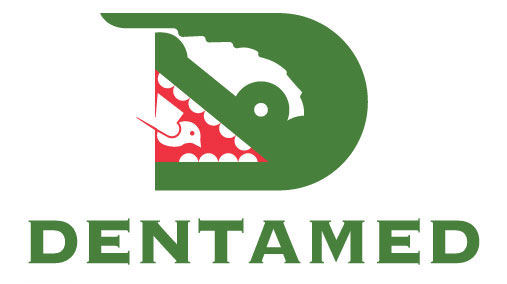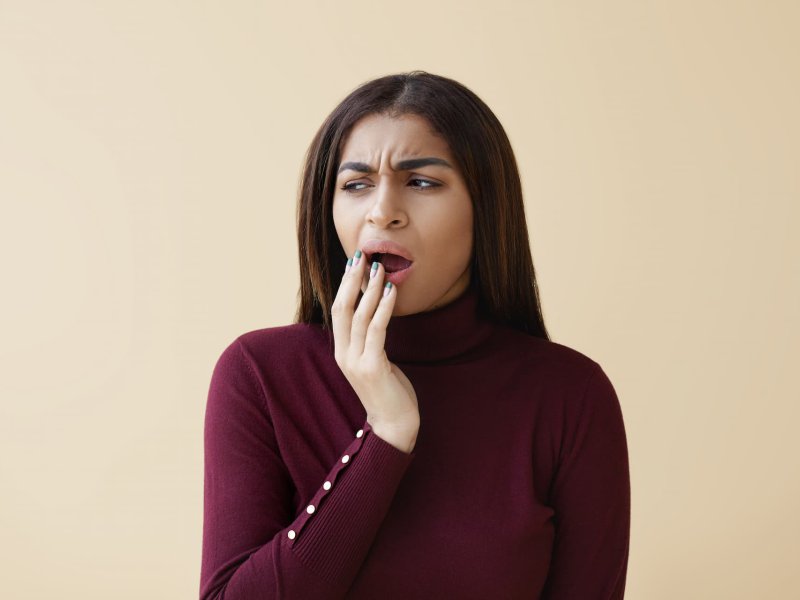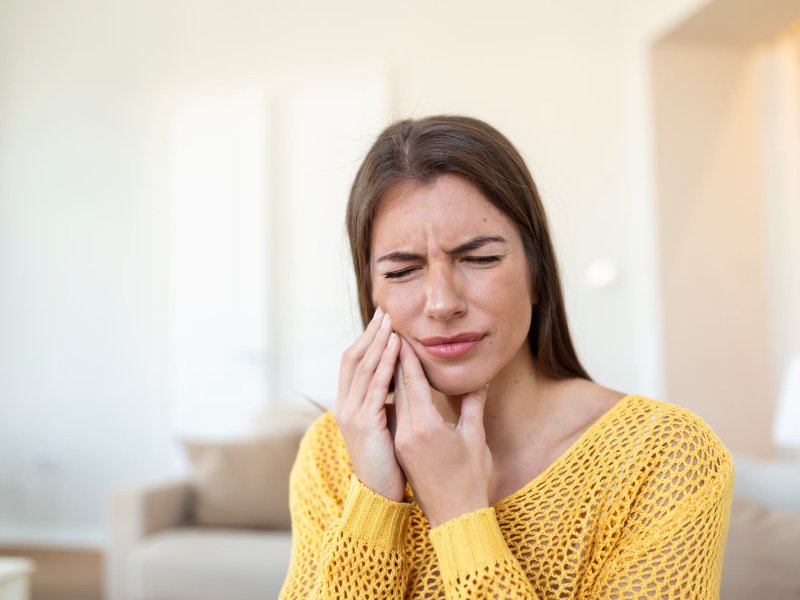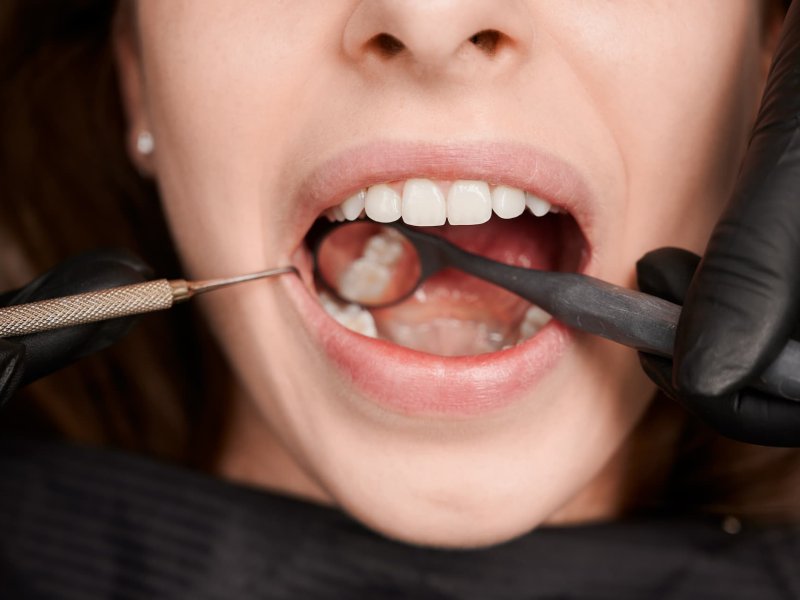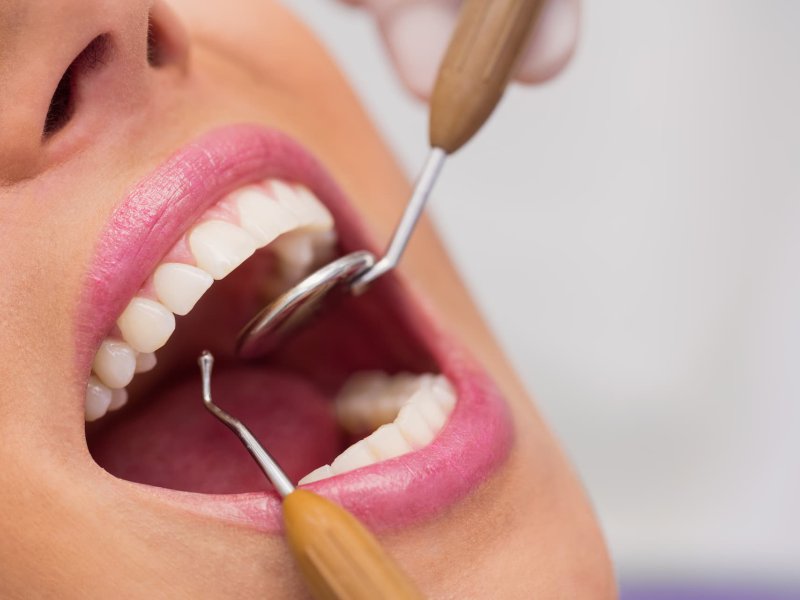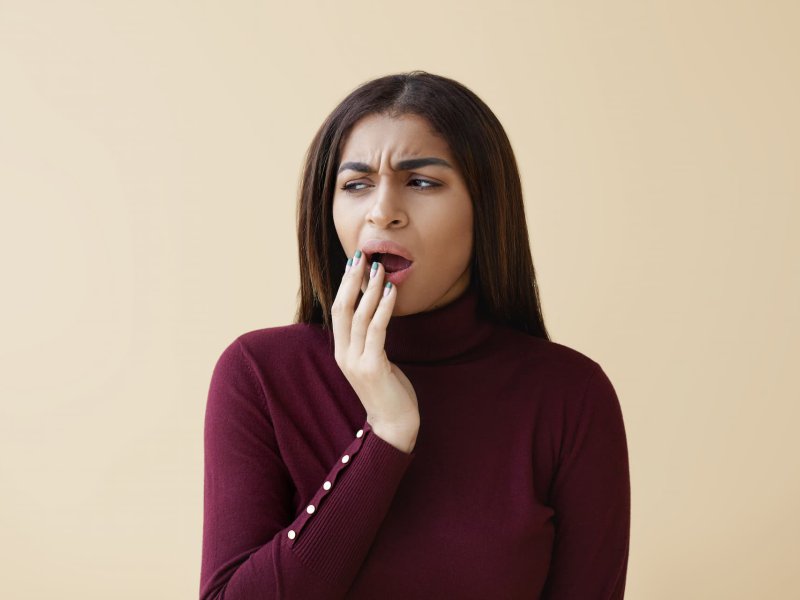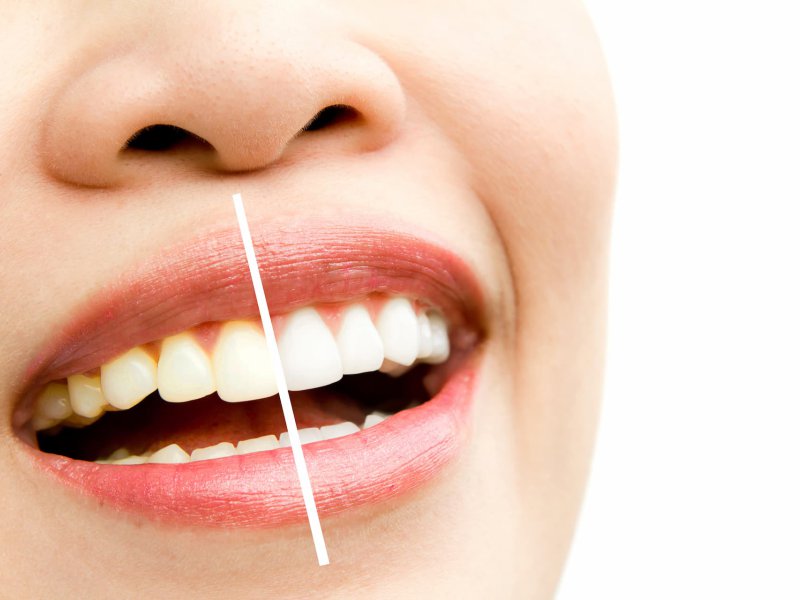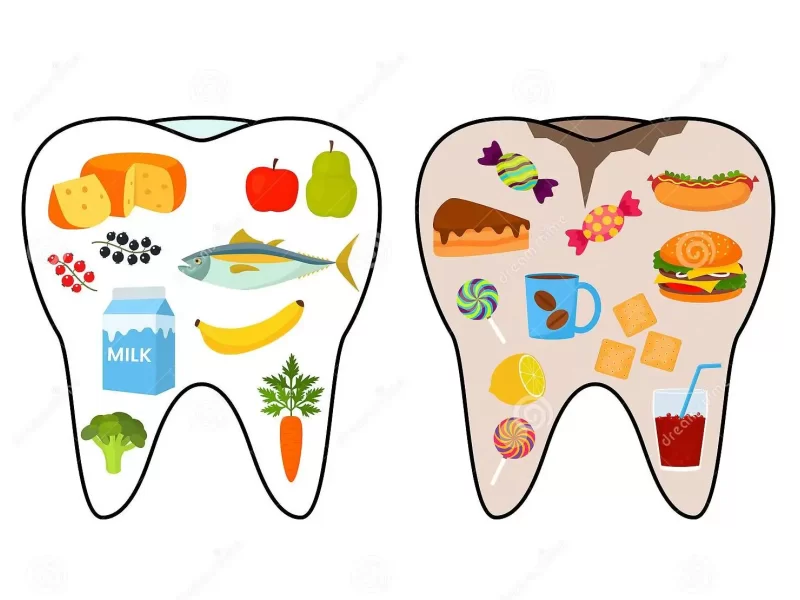What is Good for a Persistent Mouth Sore?
Sores that develop inside the mouth usually heal on their own within a few days. However, in some cases these lesions may persist for weeks, recur, or gradually enlarge. Long-lasting, treatment-resistant mouth ulcers may point not only to superficial irritation, but also to immune system disorders, vitamin deficiencies, viral infections, or—rarely—serious systemic diseases.
From a dental standpoint, when assessing non-healing oral ulcers, the type of lesion (aphtha, herpes, traumatic ulcer, lichen planus, candidiasis, etc.) and its duration are paramount. The patient’s overall health, medications, stress level, and dietary habits must also be considered, because the oral mucosa responds quickly to systemic changes.
While the public often describes these problems as “a cold sore,” “an aphthous ulcer,” or “irritation from food,” some are harmless, whereas others may be the first sign of an underlying condition. In this article, we will discuss in detail the potential causes of persistent mouth ulcers, how to distinguish them, and effective measures that support healing.
What Is a Non-Healing Mouth Ulcer?
Under normal circumstances, ulcers inside the mouth heal within 7–14 days. If a lesion lasts longer than this, it is considered a non-healing (persistent) mouth ulcer. This definition covers lesions that do not resolve spontaneously, become chronic, or recur.
A persistent ulcer is not necessarily superficial; it may deepen, develop necrosis at the base, or show induration (firm, hardened margins). Such findings may herald not just local trauma or irritation but also systemic or serious pathology. Therefore, ulcers that last a long time, enlarge, become indurated, or are painful to the touch—especially when accompanied by more than just local discomfort—must be evaluated thoroughly.
In short, a persistent mouth ulcer is a medical condition that exceeds the normal healing window, continues over time, and requires investigation of the underlying cause.
Why Do Persistent Mouth Ulcers Occur?
The causes are diverse. Some are local factors, others are systemic:
Local causes:
Trauma / mechanical irritation: Sharp tooth edges, denture contact, orthodontic wires, or repeated friction from hard foods
Chemical irritants: Mouthwashes, SLS (sodium lauryl sulfate) in toothpaste, acidic foods
Infections: Especially herpes viruses, fungal (Candida), or bacterial superinfection
Smoking / tobacco use: Can cause chronic irritation of the oral mucosa
Systemic and underlying causes:
Vitamin / mineral deficiencies: Iron, B12, folate, zinc deficiencies weaken the oral mucosa
Bowel disease and malabsorption: Celiac disease; inflammatory bowel diseases like Crohn’s can present with oral ulcers
Immune dysfunction / autoimmune disease: Behçet’s disease, lichen planus, and other systemic–oral conditions
Hematologic disorders: Leukemia, neutropenia, and other blood cell abnormalities
Hormonal or stress triggers: Menstrual cycle in women; psychological stress can precipitate ulcers
If a mouth ulcer persists, systemic evaluation should accompany local treatment. It should not be dismissed as a simple sore; root causes must be explored in detail.
Persistent Mouth Ulcers in Children
Mouth ulcers are common in children. They are usually simple, self-limiting aphthae or lesions due to viral infections. However, if an ulcer lasts longer than 2 weeks or recurs, it warrants careful attention.
Common causes:
Recurrent aphthous stomatitis: Frequent aphthae are common in children; vitamin deficiencies, stress, and diet can play a role.
Traumatic injuries: Hard foods, teeth, toothbrush trauma, or contact with dentures/orthodontic appliances
Viral infections: Agents such as herpes simplex virus can cause oral sores
Nutritional deficiencies: Rapid growth phases can be associated with B-vitamin and iron deficiencies
Indicators of systemic disease: Bowel disease or immune disorders can also begin with oral signs in children
When parents should be concerned:
If a sore persists, enlarges, or worsens
If the child refuses to eat or drink
If fever, fatigue, or other systemic symptoms are present
In these situations, consult a pediatrician or dentist. In children, it is important both to treat the ulcer and to identify the underlying cause.
Signs and Features of a Persistent Mouth Ulcer
Persistent oral ulcers may present with the following characteristics:
Duration: Persists longer than 2 weeks
Indurated edges with surrounding redness
Increasing depth; may be painful or painless
Tendency to enlarge over time
Gray-white fibrinous slough on the surface
Surface erosion and loss of mucosa
Lack of healing or frequent recurrences
Pain aggravated by talking or touch
Associated systemic findings: Lymphadenopathy, weight loss, gastrointestinal complaints
These features suggest a process more advanced than a simple aphtha and warrant specialist evaluation.
Which Diseases Can Persistent Mouth Ulcers Indicate?
Non-healing oral ulcers can be the first or accompanying sign of various systemic diseases:
Behçet’s disease: Characterized by oral ulcers, genital ulcers, and eye involvement
Inflammatory bowel disease (Crohn’s, ulcerative colitis): Oral ulcers may precede intestinal symptoms
Celiac disease: Oral ulcers can be seen in gluten intolerance
Hematologic diseases: Leukemia, anemia, neutropenia can cause mucosal ulcers
Autoimmune diseases: Lichen planus, systemic lupus erythematosus, and others can create chronic mucosal lesions
HIV/AIDS: Chronic oral ulcers are common in immunocompromised individuals
Cancer / malignant transformation: Especially unilateral, non-healing, rapidly enlarging ulcers with indurated borders require careful assessment
Neutropenia / immunodeficiencies: Weakened immunity delays mucosal healing
Therefore, a persistent mouth ulcer is an important warning sign that should not be managed with local therapy alone. Specialist assessment may include biopsy, blood tests, and systemic work-up.
How Are Persistent Mouth Ulcers Treated?
The primary goals are to reduce pain, support healing, and identify and correct underlying causes. Management is often multimodal: local (topical) therapies, systemic medications, dental interventions, biopsy, and advanced investigations as needed. The treatment plan considers ulcer size, duration, appearance, the patient’s general condition, recurrence frequency, and systemic signs.
At each step, the aims are to promote healing, lower infection risk, control pain, and reduce recurrence. Topical therapies are usually first-line; if lesions are large, recurrent, or associated with systemic disease, systemic treatments and further investigations are considered.
Topical Therapies
Topical agents act directly on the oral mucosa, with a lower risk of systemic side effects:
Corticosteroid gels, pastes, or solutions: Triamcinolone, clobetasol, dexamethasone reduce inflammation and speed healing.
Antiseptic rinses/solutions: Chlorhexidine gluconate, povidone-iodine, low-concentration hydrogen peroxide lower bacterial load and superinfection risk.
Topical anesthetic gels/rinses: Lidocaine, benzocaine provide temporary pain relief, especially helpful during eating and drinking.
Protective/adhesive films or pastes: Form a barrier over the ulcer (e.g., sucralfate, bioadhesive gels) to reduce irritation.
Topical immunomodulators: Agents like tacrolimus or retinoid-based gels/creams may modulate local immune response and aid healing.
As the lesion shrinks and heals, frequency and dose can be tapered. In some cases, topical therapy alone may be insufficient.
Systemic Therapies
If ulcers are widespread, severe, chronic, or linked to systemic causes, systemic treatment may be required and must be planned and monitored by a physician:
Systemic corticosteroids: Prednisone, dexamethasone for short courses to suppress inflammation and accelerate healing
Immunosuppressive / immunomodulatory agents: Azathioprine, tetracyclines, ciprofloxacin, dapsone, methotrexate, cyclosporine for refractory cases
Colchicine: Beneficial in some chronic, recurrent ulcerations
Pentoxifylline: Used in some studies for its microcirculatory benefits
Other agents: Thalidomide has been used in highly resistant cases but requires extreme caution due to side effects
Supportive therapy: Correction of deficiencies (B12, iron, folate, zinc) when present
Systemic therapy aims not only to hasten healing but also to reduce recurrence and control underlying systemic factors.
Dental Interventions
When ulcers are directly related to teeth, restorations, or prostheses/appliances, dental management may be needed:
Smoothing sharp tooth edges / repairs: Address sharp, cracked, or rough surfaces that traumatize soft tissues
Checking the fit of prostheses/appliances/guards: Identify and adjust pressure points or friction areas
Protective barriers: Temporary barrier materials on adjacent tooth surfaces to reduce irritation
Cleaning / debridement: Remove chronic plaque or irritants around the lesion to support healing
Laser therapy: May help reduce pain and promote healing in oral ulcers
Light therapy / phototherapy: Low-level laser therapy can support mucosal repair
These interventions primarily eliminate local trauma and irritation.
Biopsy and Advanced Work-Up
If an ulcer does not heal, is unilateral, has indurated margins, grows rapidly, or presents with other red flags (e.g., lymph node enlargement, weight loss, bleeding), biopsy and advanced testing are essential:
Biopsy (tissue sampling): Histopathology differentiates malignancy (e.g., oral cancer), lichen planus, pemphigus, pemphigoid, and other mucosal diseases.
Blood tests: CBC, electrolytes, B12, folate, iron studies, zinc, inflammatory markers, autoimmune panels.
Serologic/viral tests: HIV, HSV, EBV, hepatitis serologies as indicated.
Immunologic tests: ANA, anti-dsDNA, and other autoantibodies if autoimmune disease is suspected.
Gastroenterology evaluation: Endoscopy/colonoscopy if Crohn’s, ulcerative colitis, or celiac disease is suspected.
Imaging: Maxillofacial radiographs, CT, or MRI where appropriate.
These assessments guide treatment of the ulcer and enable early diagnosis of underlying systemic diseases.
How Can Persistent Mouth Ulcers Be Prevented?
While it is not always possible to prevent mouth ulcers entirely, many effective steps can reduce their frequency and chronicity—especially through attention to immunity, oral hygiene, and nutrition.
Maintain oral hygiene. Brush regularly, floss, and consider antiseptic mouthwashes. Avoid traumatic practices such as hard-bristled brushes or excessive pressure.
Avoid trauma. Address sharp teeth, poorly contoured fillings or dentures, and friction from orthodontic wires. If you wear prostheses or appliances, attend regular check-ups to ensure proper fit.
Adopt balanced, supportive nutrition. Deficiencies in B12, iron, folate, and zinc can cause ulcers; ensure adequate intake of vitamins and minerals.
Avoid irritants such as tobacco and alcohol. These irritate the oral mucosa and impair healing.
Manage stress. Stress weakens the immune system and can trigger aphthous ulcers.
These strategies help reduce recurrences and support overall oral and systemic health.
